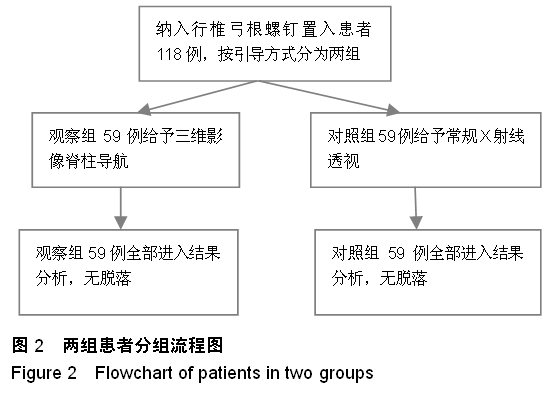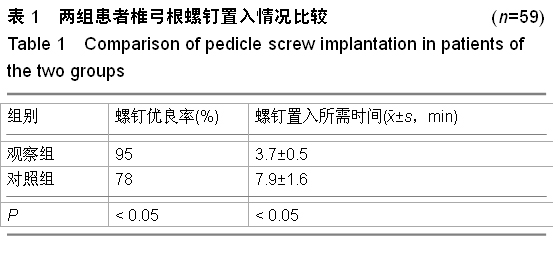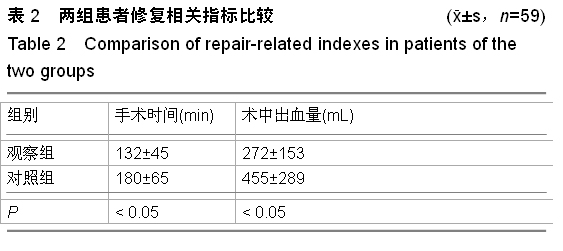| [1] 张彪,孔荣,黄炎,等.三维CT计算机导航辅助胸腰椎椎弓根螺钉内固定的临床应用[J].解剖与临床,2009,14(1):28-30,33.
[2] 刘亚军,田伟,刘波,等.CT三维导航系统辅助颈椎椎弓根螺钉内固定技术的临床应用[J].中华创伤骨科杂志,2005,7(7):630-633.
[3] 俞兴,徐林,毕连涌,等.术中三维影像脊柱导航在复杂椎弓根螺钉植入术中的应用分析[C].//第二十四届全国脊柱脊髓学术会议论文集,2012:52.
[4] 印飞,张绍东,吴小涛,等.短节段椎弓根螺钉复位固定伤椎内植骨治疗Denis B型胸腰椎骨折的影像学观察[J].中国脊柱脊髓杂志, 2013,23(4):341-346.
[5] 刘亚军,田伟,刘波,等.X线透视与计算机导航系统引导颈椎椎弓根螺钉内固定技术的对比研究[J].中华外科杂志,2005,43(20): 1328-1330.
[6] 徐卫星,陈其昕,李方才,等.透视下分步引导上中胸椎椎弓根螺钉安全植入实验研究[J].中国骨伤,2008,21(2):106-108.
[7] 夏庆,闫士举,陈统一,等.基于C形臂X 光机透视的手术导航系统在椎弓根螺钉植入的应用[J].复旦学报(医学版),2007,34(6): 873-876.
[8] 韩雨,赵志明,张永刚,等.术中三维CT导航引导下半椎体切除治疗小儿先天性脊柱侧凸[J].脊柱外科杂志,2010,8(2):78-81.
[9] 周文钰,陈扬,李振宇,等.三维CT导航在腰椎再次手术及翻修术中椎弓根螺钉置入的应用研究(附13例报告)[J].中国骨与关节损伤杂志,2010,25(3):199-201.
[10] 吕浩然,杨进顺,黄彦,等.三维导航引导下骨水泥椎体强化椎弓根钉在骨质疏松患者中的应用研究[J].微创医学,2014,9(4): 398- 401.
[11] 黄彦,吕浩然,杨进顺,等.术中三维导航引导下脊柱侧凸的椎弓根螺钉置入研究[J].中国矫形外科杂志,2012,20(24):2228-2231.
[12] 郭乃铭,周跃.计算机辅助手术导航系统在脊柱外科手术中的应用进展[J].中国矫形外科杂志,2013,21(8):787-789.
[13] 蒋涛,任先军,初同伟,等.三维CT引导下寰枢椎椎弓根螺钉治疗上颈椎不稳[J].脊柱外科杂志,2011,9(3):175-178.
[14] 曾忠友,严卫锋,陈国军,等.单侧椎弓根螺钉联合对侧经皮椎板关节突螺钉固定治疗下腰椎病变的临床观察[J].中华骨科杂志, 2011,31(8):834-839.
[15] 周蔚,徐建广,孔维清,等.计算机导航辅助下行后路内固定椎体植骨治疗胸腰椎骨折[J].中华创伤骨科杂志,2011,13(2):101-105.
[16] Kim H, Lim DH, Oh HJ. Effects of nonlinearity in the materials used for the semi-rigid pedicle screw systems on biomechanical behaviors of the lumbar spine after surgery This work was presented at the 8th China-Korea Symposium on Biomaterials and Nano-Bio Technology (Pyeongchang, Korea, Dec. 13-17 2010). Biomed Mat. 2011;6(5): 9.
[17] 俞兴,徐林,毕连涌,等.术中三维影像脊柱导航引导的腰椎弓根螺钉植入效果分析[C].//第二十四届全国脊柱脊髓学术会议论文集,2012:392.
[18] 王亚明,田增民,郑奎宏,等.三维可视化图像引导枢椎椎弓根螺钉个体化置入[J].中国脊柱脊髓杂志,2007,17(10):769-772.
[19] 俞兴,徐林,毕连涌,等.术中三维影像脊柱导航在复杂椎弓根螺钉植入术中的应用分析[C].//第二十四届全国脊柱脊髓学术会议论文集,2012:53.
[20] 续力民,项毅.导航三维影像系统引导下植入脊柱椎弓根螺钉的初步临床研究[J].中国药物与临床,2009,9(z2):45-46.
[21] 俞兴,徐林,毕连涌,等.三维导航在脊柱畸形或翻修手术患者椎弓根螺钉置入中的应用[J].中国脊柱脊髓杂志,2008,18(7): 522- 525,后插2.
[22] 俞兴,徐林,毕连涌,等.术中三维导航引导的腰椎弓根螺钉植入效果分析[J].中华医学杂志,2008,88(27):1905-1908.
[23] 刘恩志,蔡维山,郭东明,等.影像导航引导椎弓根钉加椎间融合治疗腰椎滑脱症[J].中国医药,2007,2(1):44-46.
[24] Nakashima H, Sato K, Ando T. Comparison of the Percutaneous Screw Placement Precision of Isocentric C-arm 3-dimensional Fluoroscopy-navigated Pedicle Screw Implantation and Conventional Fluoroscopy Method With Minimally Invasive Surgery. J Spinal Disord Tech. 2009;22(7): 468-472.
[25] 严瀚,刘恩志,蔡维山,等.影像导航行椎弓根钉加椎间钛笼融合治疗腰椎滑脱[J].实用骨科杂志,2009,15(4):252-254.
[26] 李永犇.经皮椎弓根螺钉植入影像辅助技术的新进展[J].河北医科大学学报,2012,33(7):859-862.
[27] 喻忠,王黎明,蒋纯志,等.三维CT导航辅助胸椎椎弓根螺钉的植入[J].中国微创外科杂志,2007,7(11):1093-1095.
[28] 方先来,张德,孟志华,等.螺旋CT三维测量在腰椎椎弓根置钉中的应用研究[J].中国脊柱脊髓杂志,2004,14(2):96-98.
[29] 权学民,徐林,柳根哲,等.三维影像脊柱导航引导后路内固定及融合治疗退行性腰椎滑脱[J].中国骨与关节损伤杂志,2010,25(12): 1092-1093.
[30] 田伟,刘亚军,刘波,等.计算机导航系统和C臂机透视引导颈椎椎弓根螺钉内固定技术的临床对比研究[J].中华外科杂志,2006, 44(20):1399-1402.
[31] 刘晓岚,周若舟,刘社庭,等.枢椎椎弓峡部引导下寰椎椎弓根置钉的CT测量及其应用[J].中国脊柱脊髓杂志,2010,20(11): 930- 934.
[32] 张韶辉,李严兵.三维重建技术在椎弓根螺钉内固定中的应用进展[J].中国脊柱脊髓杂志,2010,20(5):425-427.
[33] 聂锋锋,张英华,黄寿国,等.经皮微创椎弓根螺钉内固定与开放手术治疗胸腰椎骨折:Cobb’s角与椎体前缘高度恢复的比较[J].中国组织工程研究,2014,18(44):7094-7099.
[34] 薛明,姜永宏,刘正华,等.螺旋CT测量在胸腰段椎弓根螺钉置入术中的应用[J].实用放射学杂志,2011,27(10):1541-1543,1547.
[35] 李翀,沈忆新.应用不同影像学检查方法评估椎弓根螺钉位置的研究[J].实用骨科杂志,2009,15(12):902-905.
[36] 徐林,俞兴,毕连涌,等.脊柱导航-术中三维影像系统在腰椎弓根螺钉固定术中应用[C].//第20届全国脊柱脊髓学术年会暨脊髓损伤康复专业委员会成立20周年纪念大会论文集.2007:450.
[37] 周文钰,陈扬,李振宇,等.三维CT导航在腰椎再次手术及翻修术中椎弓根螺钉置入的应用研究(附13例报告)[J].中国骨与关节损伤杂志,2010,25(3):199-201.
[38] 徐林,俞兴,郑大滨,等.脊柱导航三维影像系统在椎弓根螺钉固定术中的应用[J].中国矫形外科杂志,2004,12(23):1895-1897.
[39] 靳冬,张果忠.椎弓根螺钉内固定及计算机导航技术的发展与应用[J].中国组织工程研究,2012,16(30):5644-5647.
[40] Putzier M,Lang K,ZippeI H.Comparative results between conventional and computer-assisted pedicle screw insertion in the thoracic,lumbar,and sacral spine. Compter ass isted otthopedic surgery.Davos:Fourth Intemational Symposium, 1999. |




.jpg)